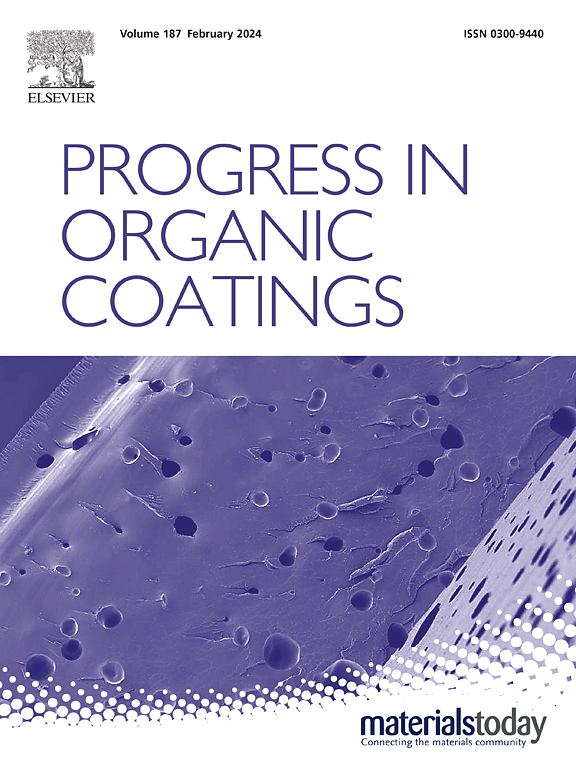Effect of new phenylalanine monomer and molecular structure on water and heat resistance of pressure-sensitive adhesive
IF 6.5
2区 材料科学
Q1 CHEMISTRY, APPLIED
引用次数: 0
Abstract
Acrylate pressure-sensitive adhesives (PSA) have been widely used in daily life and industrial manufacturing. However, its inherent hydrophilicity and low cohesive strength severely limit its application under harsh conditions such as underwater and high temperature. In this study, the molecular structure of PSA was carefully designed to take advantage of the structurally advantageous strategy of N-acryloylphenylalanine (ACP), and PSA was prepared by copolymerization of ACP with commonly used acrylic monomers. The rigid benzene ring of ACP facilitates the breaking of the hydration layer on the surface of the PSA-substrate underwater, and the carboxylic acid facilitates the establishment of an effective physical interaction between PSA and substrate. As a result, compared with the conventional acrylic ABP0.1-AA10, the ABP0.1-ACP10 exhibited excellent adhesion properties underwater and at high temperature, with an underwater peel strength of 3.1 N and a high-temperature peel strength of 8.7 N, which were increased by 181.1 % and 234.6 %, respectively. Notably, the UV-induced cross-linking and rigid benzene ring restricted the movement of molecular chains, giving ABP0.1-ACP10 good heat resistance (THRI: 178.3 °C) and water resistance. Our work may provide a promising solution for designing PSA with good water resistance, heat resistance and high cohesion.
求助全文
约1分钟内获得全文
求助全文
来源期刊

Progress in Organic Coatings
工程技术-材料科学:膜
CiteScore
11.40
自引率
15.20%
发文量
577
审稿时长
48 days
期刊介绍:
The aim of this international journal is to analyse and publicise the progress and current state of knowledge in the field of organic coatings and related materials. The Editors and the Editorial Board members will solicit both review and research papers from academic and industrial scientists who are actively engaged in research and development or, in the case of review papers, have extensive experience in the subject to be reviewed. Unsolicited manuscripts will be accepted if they meet the journal''s requirements. The journal publishes papers dealing with such subjects as:
• Chemical, physical and technological properties of organic coatings and related materials
• Problems and methods of preparation, manufacture and application of these materials
• Performance, testing and analysis.
文献相关原料
公司名称
产品信息
阿拉丁
4-acryloxybenzophenone
阿拉丁
acryloyl chloride
阿拉丁
phenylalanine
阿拉丁
acrylic acid
阿拉丁
2-ethylhexyl acrylate
阿拉丁
Tetrahydrofuran
阿拉丁
Butyl acrylate
 求助内容:
求助内容: 应助结果提醒方式:
应助结果提醒方式:


